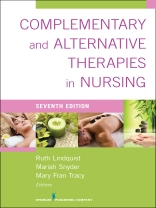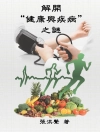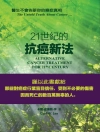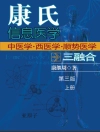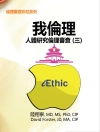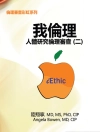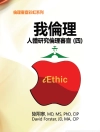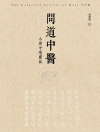Sixth Edition Designated a Doodyís Core Title!
‘[C]onsistently offers easily accessible and timely information on how complementary therapies influence the health, comfort, and well-being of patients in a variety of clinical settings. It is an influential resource for nurses in practice, education, and research.’
–Janice Post-White , Ph D, RN, FAAN
Praise for the Sixth Edition
‘Complementary and alternative therapies are increasingly popular and this book provides an informative and up-to-date introduction to the more commonly used treatments.’– IAHPC Newsletter (International Association for Hospice and Palliative Care)
The seventh edition of this highly acclaimed book continues to deliver evidence-based practice guidelines for the use of complementary and alternative therapies in nursing. It is the only book about complementary/alternative therapies that is focused on nursing, has chapters that examine specific therapies along with guidance for their implementation, and addresses therapies through a cultural/international lens. It reflects the rapid expansion of research on many complementary therapies and the exponential increase in the use of these therapies in the United States and globally. This new edition satisfies the recent requirement by the AACN for knowledge of complementary therapies as essential content for BA and Post-BA programs and will assist students in their study for NCLEX-RN test items regarding complementary therapies.
New to this edition are the contributions of a new editor, Dr. Mary Frances Tracy, who is a recognized expert in the use of complementary therapies in both research and practice settings. In addition to the updating of all research-related content, the book now includes a focus on the use of alternative therapies outside of the U.S. and content on cultural therapies that nurses may encounter in clinical agencies. The book incorporates the most up-to-date information from the National Center for Complementary/Alternative Medicine (NCCAM), the relationship of technology to complementary therapies, updated information about precautions to be taken or interactions to note when using these therapies, instructions for the use of various therapies, and available resources and legal aspects related to the use of complementary therapies. The book includes an interactive PDF.
New to the Seventh Edition:
- Completely updated research-related contents
- A focus on the international use of alternative/complementary therapies
- Incorporates new information from the National Center for Complementary/Alternative Medicine including their most recent classifications for complementary therapies
- New content on cultural therapies that nurses may encounter
- Technology and complementary therapies
- New information on precautions and potential interactions
- Instruction techniques for each therapy in exhibit form
- Legal concerns regarding the use of complementary therapies
- New references providing cutting edge content
İçerik tablosu
‘
Contributors
Foreword
Preface
Part I Foundations for Practice
Chapter 1 Evolution and Use of Complementary and Alternative Therapies
Mariah Snyder, Kathleen Niska, and Ruth Lindquist
Chapter 2 Complementary Therapies: Nurseís Self-Care
Barbara Leonard
Chapter 3 Presence
Sue Penque and Mariah Snyder
Chapter 4 Therapeutic Listening
Shigeaki Watanuki, Mary Fran Tracy, and Ruth Lindquist
Chapter 5 Creating Optimal Healing Environments
Mary Jo Kreitzer and Terri Aborowsky
Part II Mind-Body-Spirit Therapies
Chapter 6 Imagery
Maura Fitzgerald and Mary Langevin
Chapter 7 Music Intervention
Linda Chlan and Annie Heiderscheit
Chapter 8 Humor
Shirley Trout
Chapter 9 Yoga
Miriam E. Cameron
Chapter 10 Biofeedback
Marion Good and Jaclene Zauszniewski
Chapter 11 Meditation
Cynthia R. Gross, Michael S. Christopher, and Maryanne Reilly-Spong
Chapter 12 Prayer
Mariah Snyder and Laura Lathrop
Chapter 13 Journaling
Mariah Snyder
Chapter 14 Storytelling
Margaret P. Moss
Chapter 15 Animal-Assisted Therapy
Susan OíConner-Von
Part III Manipulative and Body-Based Therapies
Chapter 16 Massage
Melodee Harris
Chapter 17 Tai Chi
Kuei-Min Chen
Chapter 18 Relaxation Therapies
Elizabeth L. Peska, Susan M. Bee, and Michele M. Evans
Chapter 19 Exercise
Diane Treat Jacobson, Ulf G. Bron‰s, and Dereck Salisbury
Part IV Natural Products
Chapter 20 Aromatherapy
Linda L. HalcÛn
Chapter 21 Herbal Medicines
Gregory A. Plotnikoff
Chapter 22 Functional Foods and Nutraceuticals
Melissa Frisvold
Part V Energy Therapies
Chapter 23 Light Therapy
Niloufar Hadidi
Chapter 24 Healing Touch
Alexa W. Umbreit
Chapter 25 Reiki
Debbie Ringdahl
Chapter 26 Acupressure
Pamela Weiss-Farnan
Chapter 27 Reflexology
Thora Jenny Gunnarsdottir
Chapter 28 Magnet Therapy
Corjena K. Cheung
Part VI Education, Practice, and Research
Chapter 29 Integrating Complementary Therapies into Education
Carie A. Braun
Chapter 30 Integrating Complementary Therapies Into Nursing Practice
Elizabeth L. Pestka and Susan Cutshall
Chapter 31 Perspectives on Future Research
Ruth Lindquist, Yeoungsuk Song, and Mariah Snyder
Index
‘
Yazar hakkında
Mary Fran Tracy, Ph D, RN, APRN, CNS, FCNS, FAAN is an Associate Professor, University of Minnesota School of Nursing and an Adjunct Assistant Professor, University of Minnesota School of Medicine. Dr. Tracy is a Fellow of the American Academy of Nursing and a Fellow of the Clinical Nurse Specialist Institute, as well as a Past President of the American Association of Critical-Care Nurses. Her research focus is in symptom management for acute and critically ill patients. As a Densford Scholar in the Katharine J. Densford International Center for Nursing Leadership, she conducted a national survey of critical care nurses’ attitudes towards and use of complementary and alternative therapies and this survey has been further used by researchers in more than 15 countries.
